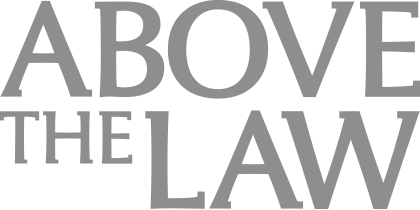10 Things To Know About Labor And Employment Law
What are the best and worst aspects of practicing in this field?
 Ed. note: Welcome to the latest installment of Better Know A Practice Area, a new series introducing readers to different practice areas. Each post is written by an editor at Practical Law who previously practiced in that area and currently writes about it. Prior columns have covered capital markets and corporate governance, securities litigation and enforcement, patent litigation, executive compensation, and commercial transactions.
Ed. note: Welcome to the latest installment of Better Know A Practice Area, a new series introducing readers to different practice areas. Each post is written by an editor at Practical Law who previously practiced in that area and currently writes about it. Prior columns have covered capital markets and corporate governance, securities litigation and enforcement, patent litigation, executive compensation, and commercial transactions.
Today’s topic: life as a lawyer handling labor and employment disputes.
1. What do you do in a typical day?

Precision Meets AI: Thomson Reuters' New Era Of Legal Research
There is no typical day in labor and employment law practice! That’s part of what keeps it interesting and stimulating. Most management-side L&E attorneys have a mix of litigation and counseling in their practice, so many days are split between helping clients prevent litigation and defending clients against claims that are brought.
On the counseling side, an attorney’s day can be just as wildly unpredictable as the client’s day. The phone can ring at any moment with a client needing immediate advice (“An employee just refused to travel because of Zika concerns. Can we discipline him?” or “An employee just requested time off for an illness. What are our obligations under the FMLA, ADA, and sick leave laws?”) or help with longer-term projects (“Can you review our employee handbook for compliance with all the state and local laws where we have employees?” or “Can you conduct an audit of our workforce to make sure we have properly classified employees under the FLSA?”).
On the litigation side, the day will vary depending on the stage of the case. On any given day, an L&E litigator may be drafting pleadings, interviewing witnesses, conducting legal research, preparing motion papers, appearing for court conferences, preparing discovery requests and responses, taking and defending depositions, engaging in settlement discussions, and — if the case is not disposed of on a motion or settled — preparing for or participating in trial.
2. Who do you work with?
Sponsored

AI Presents Both Opportunities And Risks For Lawyers. Are You Prepared?

Happy Lawyers, Better Results The Key To Thriving In Tough Times

Generative AI at Work: Boosting e-Discovery Efficiency for Corporate Legal Teams

AI Presents Both Opportunities And Risks For Lawyers. Are You Prepared?
A single-plaintiff case is typically staffed with a partner, associate, and paralegal. More attorneys may be added to class or collective actions or cases with multiple plaintiffs, and an attorney who specializes in electronic discovery may also assist, depending on the circumstances. This lean staffing allows associates of all levels to work closely and directly with partners and gain plenty of experience running cases.
As far as clients, the sky’s the limit. Any person, company, or organization that has employees is an “employer,” and therefore a potential client, regardless of sector, industry, or size. This affords an L&E attorney the opportunity to work with all sorts of interesting clients, from mom-and-pop shops and Fortune 500 companies to government entities and non-profit organizations, and everything in between. Depending on how hands-on the partner is, associates often work directly with the client representative, who may be a human resources manager, in-house counsel, an owner or executive, or an individually named defendant (for example, the supervisor or co-worker of the individual bringing a lawsuit).
L&E attorneys also frequently work with insurance companies, as many cases are covered by employment practices liability insurance (EPLI).
3. What does a common career path look like?
The career goal of many associates is either to become partner (typically after 8 or more years of practice) or in-house employment counsel (sometimes after only a few years of practice). However, these are not the only career paths available. Some associates who enjoy practicing law but do not want business-generating responsibilities prefer to transition to an “of counsel” role at their firm. Other attorneys choose to hang their own shingle, often taking on plaintiff-side work. Of course, there are also related career paths outside the practice of law.
Sponsored

A New AI-Powered Practice Management Platform With Flexible Deployment Options

Precision Meets AI: Thomson Reuters' New Era Of Legal Research
4. If variety is the spice of life, how spicy is this practice area?
The spiciest. In fact, I would venture to say it’s the chilli pepper of practice areas. As previously discussed, there is no typical day, and learning about different clients’ operations and industries is always pretty interesting. Aside from the variation in tasks and clients, each case brings a unique set of facts and allegations that are never boring and often require keen and creative legal analysis. Cases and work assignments never feel overly routine or rote.
Adding to this variety is the wide assortment of legal areas within labor and employment law, including employment discrimination, workplace harassment, wage and hour, family and medical leave, traditional labor, non-compete agreements, and health and safety … to name just a few. These areas of law are constantly evolving at the federal, state, and local law level, so there are always plenty of legal developments to shake things up.
5. How much wear and tear?
This all depends on the expectations and culture of the firm or other workplace. There is some variation across firms regarding the amount of annual billable hours associates are expected to achieve, as well as the consequences for not meeting those hours. Different firms also have different structures for assigning new cases, which can impact how heavy an associate’s workload is. However, because of the nature of litigation and unanticipated client emergencies, there will always be times that are fast-paced and require long hours.
6. Of the people in this practice group who hate it, what exactly do they hate about it?
Hate is a strong word, but the same challenges and pressures that make this practice area so interesting and appealing can also be daunting at times. For example, the unpredictability can be exciting or frustrating, depending on the day or perspective. The emotional nature and contentiousness of some cases can also take its toll. Even when the cases are not high stakes from a monetary perspective, there are other important things at stake like people’s livelihoods and careers.
7. Of the people in this practice group who love it, what exactly do they love about it?
Many L&E attorneys love that this practice area is so relatable and people-oriented. Anyone who has had a job can relate to the issues an L&E attorney encounters on a daily basis.
8. Are there common avenues out of this practice area?
L&E practitioner to in-house counsel is a common career path. Many companies have one or more in-house employment counsel positions, which are coveted by those L&E associates looking to transition to an in-house role. Other companies have a general counsel who takes on employment law issues along with many other legal responsibilities (for which know-how beyond just employment law is likely required).
The litigation and substantive experience gained by an L&E attorney also lends itself to a variety of other roles outside of a law firm. Many L&E attorneys transition to human resources, employee relations, and other similar roles with companies. Other opportunities include consulting (for example, outside companies offering harassment and diversity training to employers), recruiting, publishing, and the public sector (for example, judicial clerkships or agencies like the US Equal Employment Opportunity Commission, Department of Labor, or Department of Justice).
9. What are some market trends that impact this practice area?
Employment law issues are not going away. But with pressure on clients to be more and more cost-conscious, many law firms are exploring ways to increase efficiency and reduce legal costs. We can expect to see clients requesting and law firms offering more creative cost structures and alternative staffing models, including options like flat-fee billing for certain projects and streamlined case management systems with dedicated attorneys for certain administrative agency charges and single-plaintiff cases.
10. If you had to recommend one candidate from a room crowded with recent bar exam graduates, what specific qualities would he or she have that would ensure success in this practice area?
Many of the qualities that make for a successful L&E attorney are things that apply to all good lawyers: dedication, work ethic, intellectual curiosity, problem-solving skills, and professional responsibility. Another important quality for this specific practice area is effective people skills because, in the end, this area of law is all about people. Whether it’s interviewing a witness about a sensitive topic, taking the deposition of plaintiff, or delivering difficult advice to a client, the ability to listen and communicate, understand and empathize, interact respectfully, manage conflict, and build trust is paramount.

Rosemary Joyce
Rosemary Joyce is a senior legal editor on Practical Law’s Labor and Employment team. She focuses on all things labor and employment law related, including employment litigation, workplace safety and health, and traditional labor matters. Prior to joining Practical Law, she was Special Counsel with Littler Mendelson P.C., Counsel with Fox Rothschild LLP, and an associate with Seyfarth Shaw LLP.







